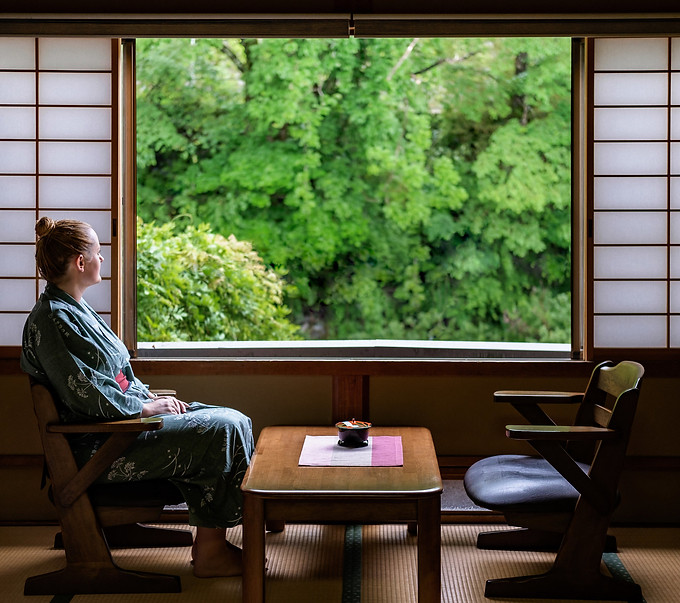
Ryokan
Japan’s ryokans are arguably among the best accommodations you could experience, provided you’re looking for some intense peace and quiet, some extraordinary Japanese cuisine, and indulge in one of the world’s longest running tradition of hospitality. This is especially true when it’s the place you arrive after a fulfilling day of hiking or traveling.

The world's oldest inn
There are many historic inns in the world, but the oldest of them all, listed in the Guinness World Records as the oldest inn in the world, is actually in Japan. The name of the inn is Keiunkan and it is tucked away deep in the mountains of Hayakawa Town in Yamanashi Prefecture, the least populated town in Japan, and isn't it amazing that the source of the water at Keiunkan has never run dry in over 1300 years? Japan is a country with some of the oldest inns in the world.

The rooms
You know that you entered a traditional Japanese guest room when you recognize the soothing scent of Tatami mats covered with soft rush. Take a rest on the Zabuton cushions, and a make your self a cup of green tea from the pot placed on a low table. Perhaps you see a hanging scroll of painting, maybe a calligraphic work, or fresh flower arrangements in the raised alcove called the Tokonoma. Don’t worry if you can’t find your bed. Your Futon mattresses will be rolled out and prepared by your host while you’re busy enjoying your dinner.

Onsen
Hot springs can be found all around the world. In Japan however, the art of bathing is taken a step further. Nearly every ryokan is equipped with a public bath and many of them are natural hot-springs. Find your Yukata (a Japanese style bath robe) in your room, and make sure to souse in your ryokan’s Onsen before or after dinner. The design of these serene spaces and the quality of the spring differ in each region, adding another element of bliss to traveling in the land of the steaming shoulders.

Kaiseki
The highlight in any ryokan, is dinner. An elaborate multi-course affair for which you follow a carefully prescribed routine expressed both in season and space. Kaiseki is a traditional Japanese tasting course comprised of many small tea ceremonies, but over the centuries this culinary tradition has become the pinnacle of Japanese haute cuisine. Needless to mention that the majority of the seasonal ingredients are locally sourced, and be sure to consult your host for the best pairing of Nihonshu!

Omotenashi
The word Omotenashi translates to Japanese hospitality, the way in which Japanese hosts pay attention to detail and anticipate their guests needs. You might find a piece of cloth covering your hand bag in the dining room to prevent it from catching the smell of food, or your slippers turned around pointing outwards so that you don’t have to do it your self when leaving your room, all without you ever realizing it being done. These are only a few examples of how Omotenashi is often invisible to the guests and should never intentionally remind the guests of the hospitality.

Sake
The word “Sake” is commonly used as in “alcohol” among the Japanese. If you want to sound refined, say “Nihonshu”. The term translates as "Japanese-Alcohol” and refers to our national drink brewed from rice. Like wine, there are numerous producers tirelessly crafting Nihonshu, and the flavor can roughly be scaled from dry to sweet. It’s history go way back to 500BC with deep ties to the ancient Shinto religion of Japan. Wherever you are, it is advised to try at least one type of locally produced Nihonshu.